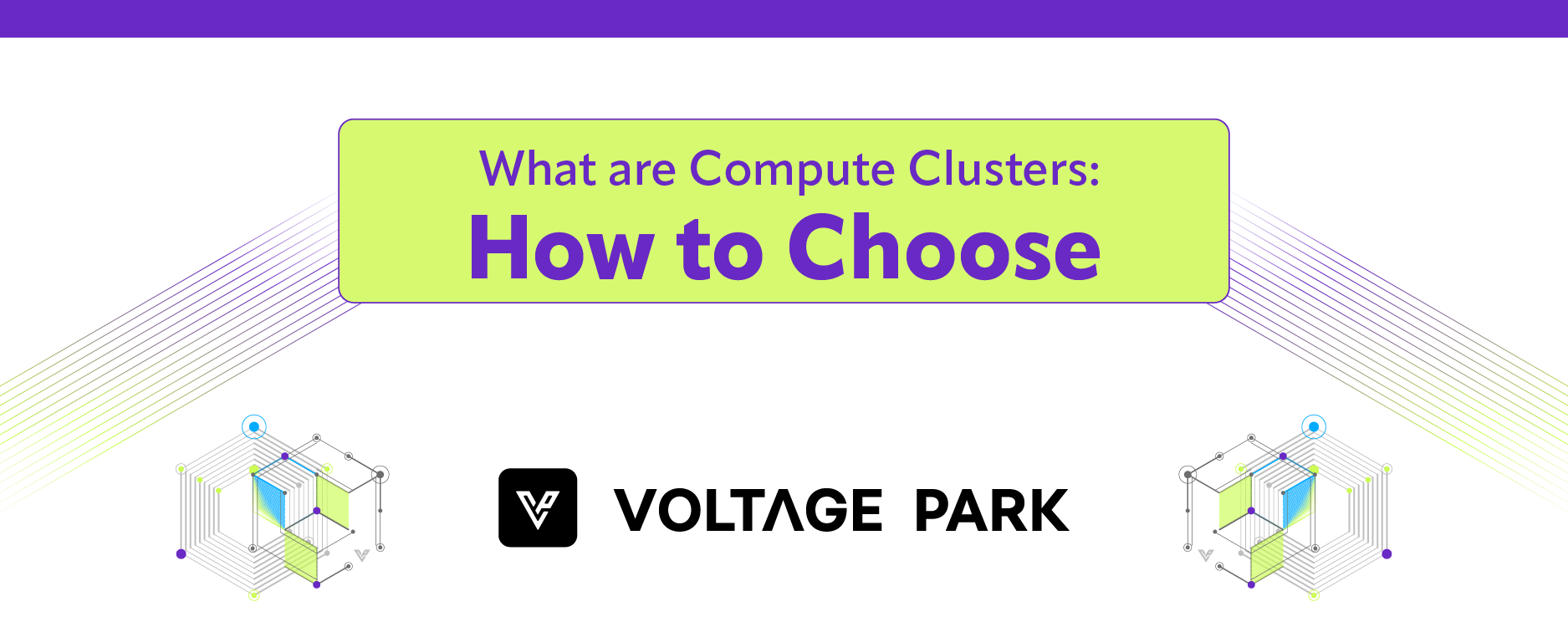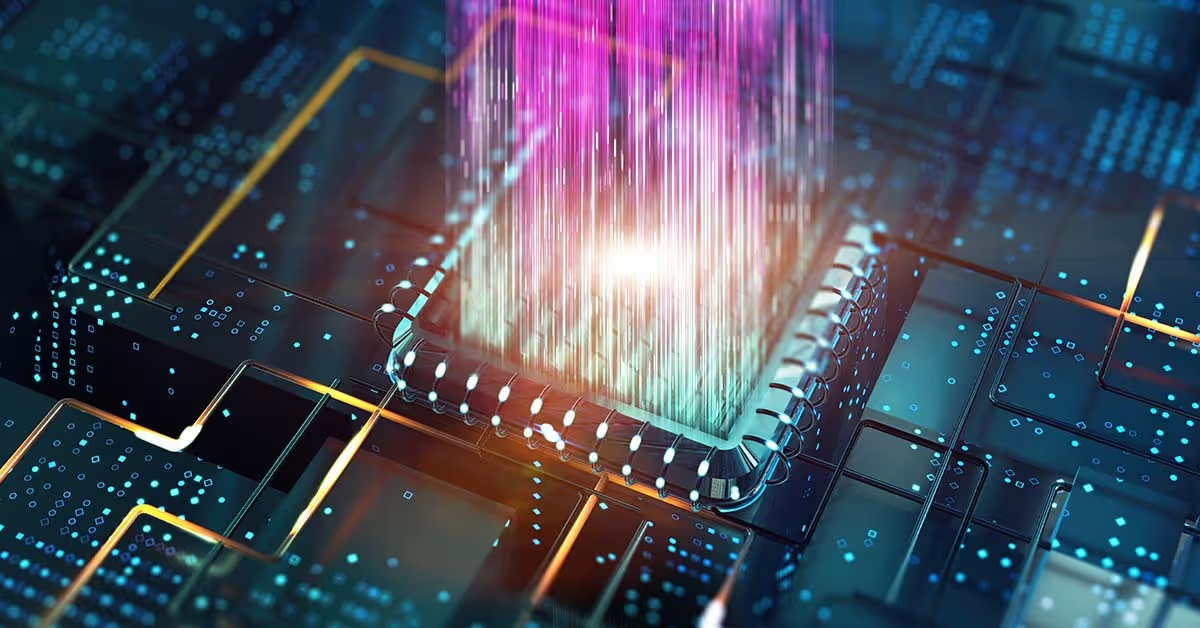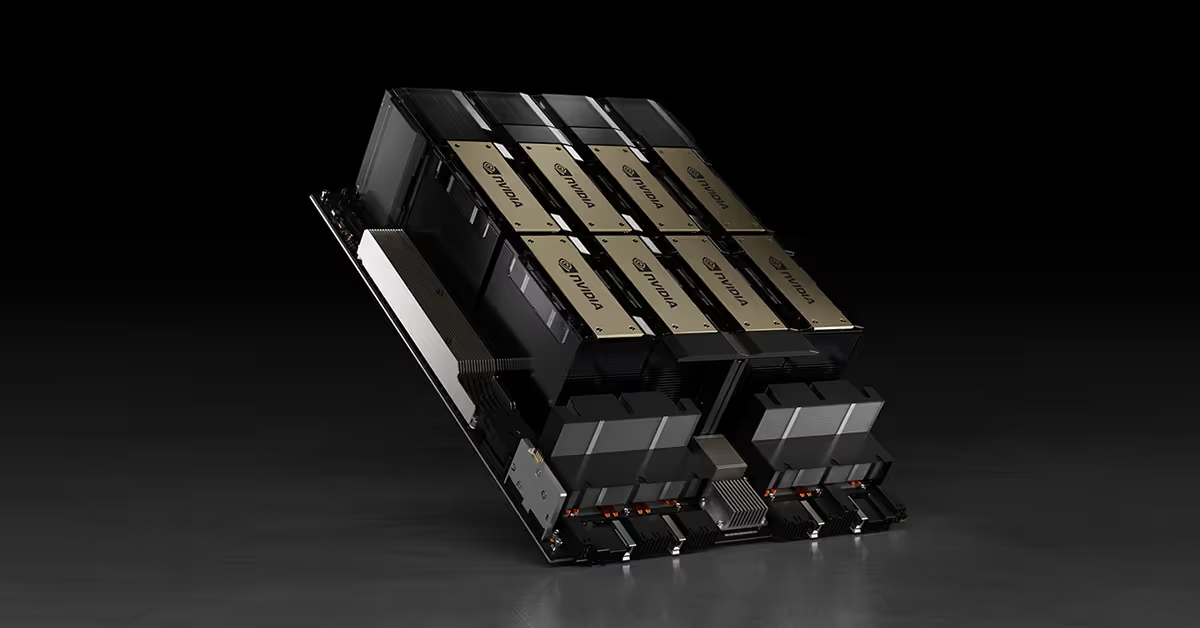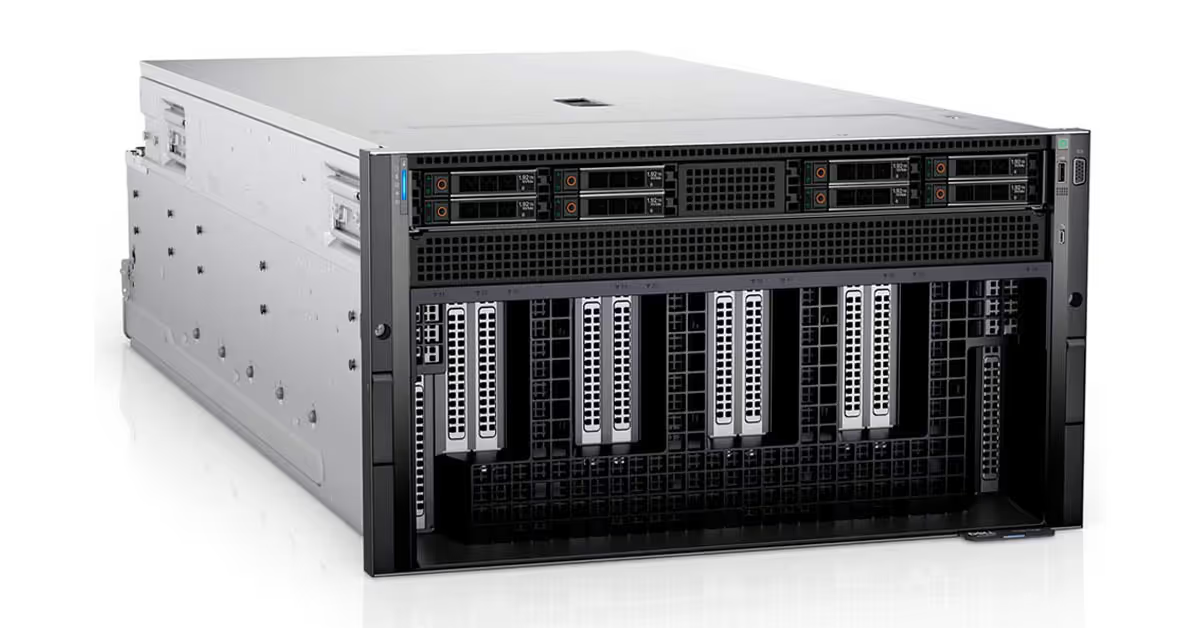What are AI Compute Clusters: How to Choose

Without the compute power of GPU clusters, training models like GPT or other LLMs would take years instead of weeks.
What are AI compute clusters?
An AI compute cluster is a group of servers, known as GPU nodes, connected together to create a cluster. The individual GPU nodes are built for parallel computing. This makes them ideal for heavy compute workloads like machine learning, data analytics, rendering, and scientific modeling.
When many GPUs work together on different servers, they can divide complex tasks into smaller ones and run them across the cluster - at the same time. This parallel processing speeds up training AI models, supports faster inference, and allows real-time processing for complex applications.
Now that we’ve defined what a GPU cluster is in AI compute, we can explore the components and outline the key considerations enterprises need to take into account when choosing a cluster that meets their needs.
Key Components of a GPU server cluster
To understand how GPU clusters function, let’s look at the essential components that make them work.
GPU Nodes
Each GPU node is a server equipped with GPUs, CPUs, system memory, and local storage. The GPUs perform the heavy lifting, while the CPUs manage orchestration tasks developers can't easily run in parallel.
- Worker nodes: Execute compute-heavy tasks like training and inference.
- Head node: Manages the cluster, schedules jobs, and monitors resource allocation.
Networking & Interconnects
High-speed interconnects such as InfiniBand, NVLink, or PCIe handle the communication between GPU nodes. These connections provide low latency and prevent bottlenecks during the transfer of massive amounts of data across nodes.
Storage Systems
AI workloads involve huge amounts of data requiring tiered storage methods. This setup provides quick access to training datasets, model checkpoints, and inference data.
Cluster Orchestration Software
Orchestration software lets workloads run efficiently across all nodes.
Popular options include:
- Kubernetes: Ideal for containerized workloads and dynamic scaling, a managed Kubernetes offering reduces operational costs across infrastructures.
- Slurm: Favored in HPC environments for advanced job scheduling.
- Hybrid solutions: Some providers offer cluster models as a service, blending the best of Kubernetes and Slurm for flexibility.
Benefits of GPU Clusters for AI
Organizations adopt GPU clusters for AI because they deliver clear advantages over CPU-only systems:
- Massive parallelism: Process billions of data points at once.
- Scalability: Add GPU nodes to increase capacity as workloads grow.
- Cost-effectiveness: Clusters provide better performance-to-cost ratios compared to scaling CPU-only infrastructure.
- Energy efficiency: GPUs deliver higher compute per watt, lowering operational costs.
- Resilience: Redundancy and failover mechanisms ensure mission-critical reliability
How to choose the right AI cluster
Selecting a GPU server cluster depends on your specific requirements. Here’s what to consider based on the primary problem you are trying to solve:
Define your use case
- Training: Requires GPUs built for faster training, scalability (such as the NVIDIA Blackwell fleet) and are ready to be connected into large clusters.
- Inference: Prioritize GPU memory and efficient scaling to handle user requests in real time.
- Fine-tuning: May only need a few nodes, but benefits from fast networking and flexible scaling.
Hardware considerations
- GPU type: Choose GPUs optimized for your workload (AI training, inference, rendering, or simulation).
- CPU & RAM: Make sure CPUs can manage orchestration efficiently and that there’s sufficient memory for large datasets.
- NIC bandwidth: Invest in NICs that support high-throughput networking to avoid bottlenecks
Hardware considerations are a vital part of improving the prototype-to-production pipeline.
[WATCH BELOW]: Not considering the cost of AI hardware early in your production process will land teams in procurement purgatory.
Deployment model
- On-premises HPC GPU clusters: Best for maximum control and compliance-heavy industries.
- Cloud GPU clusters: Offer pay-as-you-go flexibility and rapid scalability.
- Hybrid models or Cluster-as-a-Service: Provide a balance of scalability, performance, and cost.
Networking & storage
- Use InfiniBand or similar technologies for high-bandwidth inter-node communication.
- Implement checkpointing and fast storage to ensure resilience against failures.
- Clusters allow for massive dataset transmissions.
A secure storage architecture should allow users to checkpoint trillion-parameter models or seamlessly share data across thousands of nodes without manual reconfiguration.
[WATCH BELOW]: Why Voltage Park uses VAST Data's AI OS operating system.
Provider reliability
Check if your provider owns and manages their own data centers. Relying on third-party vendors for operations, staffing, utilities, management and other associated costs can quickly make costs skyrocket, inconsistent, or lack transparency. Too many providers can also create an inconsistent user experience for your enterprise. This is why Voltage Park owns the hardware and hires the employees who operate in the data centers we use.
As part of your evaluation, also ask about sustainability practices and any renewable energy options being used to power the data center.
Future trends in AI compute clusters
- Next-generation GPUs: NVIDIA Blackwell and other advanced architectures will push performance even further.
- AI-driven workload optimization: Intelligent orchestration tools will dynamically allocate resources to minimize idle GPU time and reduce costs.
- Edge deployments: Distributed GPU clusters will bring real-time AI inference to autonomous vehicles, industrial IoT, and smart cities.
How Voltage Park can help
A GPU cluster has the potential to accelerate your business outcomes, when it is the right fit. Different nodes have different strengths. Our AI infrastructure experts can help you match your business goals to the right hardware and tools. Contact us today.
%201.avif)


